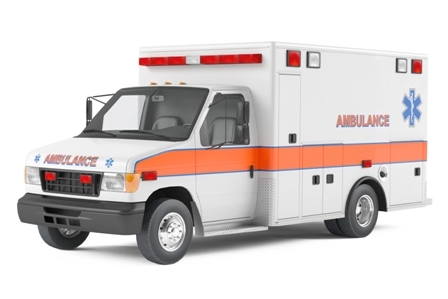Tackle Challenging Ambulance Service Coding With Q Modifiers

You’ll need to know when a patient is pronounced dead to use modifier QL.
Whether you are coding for a facility-owned ambulance service or for a privately owned company that provides ambulance services, you will want to add modifier QL to your toolbox. Depending on the type of ambulance service you code for, you’ll also need modifiers QM or QN.
No matter which type of service you code for, read on to ensure you aren’t missing important informational modifiers on your ambulance claims.
Get to Know Ambulance Modifiers
There are three modifiers, referred to as origin and destination modifiers, available for you to use with ambulance services as follows:
Watch for the Time of Death for QL
If your provider’s patient dies after the dispatch of the ground ambulance, but before the patient is loaded into the ambulance, you will attach modifier QL to a basic life support (BLS) service code from the ambulance transportation services A0425-A0888 range.
If an ambulance professional pronounces the patient time of death (TOD) on route to the facility, Medicare will pay for medically necessary services and there is no need for a modifier.
If a patient dies once an air ambulance takes off for the pickup location but before the patient is loaded into the ambulance, you will report modifier QL with a BLS code. If the provider pronounces the patient TOD onboard, prior to arrival at the facility, Medicare treats the situation as if the beneficiary did not die.
Good news: “I can’t think of a reason why anyone would use QL either because typically, if we are called to a cardiac arrest and then pronounce the patient dead, we would not bill for services,” says Kevin Solinsky, CPC, CPC-I, CEDC, CEMC, president of Healthcare Coding Consultants, LLC in Gilbert, Ariz. “I suspect in some areas of the country they would bill the patient’s nsurance for all of the drugs and equipment used on a cardiac arrest to cover the costs.”
Define QN and QM Based on Ambulance Arrangement
The difference between using QN and QM is who pays the ambulance service. If a facility providing the ambulance service receives reimbursement through Medicare Part A, you must use modifier QN with every HCPCS ambulance code. If a facility pays an outside ambulance provider for the service, you use modifier QM.
Caution: If you use modifiers QM or QN on a Medicare Part B claim, you will receive a denial.
“I suspect that very few payers require, or will even accept, QM or QN,” Solinsky adds.
If your payer does require QM or QN, you will attach the modifiers to the ambulance procedure codes that are available — A0425 (Ground mileage, per statute mile) represents the ground mileage per mile and A0426-A0888 cover the type of service from nonemergency to emergency and ambulance to helicopter.

